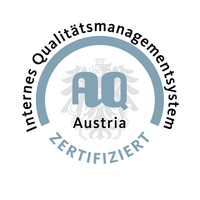Research Interests
From functional materials to active devices in energy conversion and storage

Energy storage and conversion are currently among the most relevant research topics, since the use of renewable energy sources is elementary for the implementation of plans to reduce CO
2 emissions. Energy generation from sun and wind and its electrochemical storage in batteries or fuels, such as hydrogen, demand solutions that need to be improved in both efficiency and scalability. Although substantial progress has already been achieved, many proposed concepts show good efficiencies in laboratory environments, but they are not always easily scalable or too costly to be produced on a larger scale. Our long-term goal is to contribute to the development of solutions in the area of energy conversion and storage, on one hand by developing functional materials using (scalable) solid-state chemical syntheses and simple deposition techniques, on the other hand by increasing the fundamental scientific knowledge about structure-property relationships in energy storage materials.
Active Materials for photoelectrochemical energy storage in solar fuels

Oxynitrides are examples for very suitable materials for photoelectrochemical water splitting. The development of efficient photoelectrode materials is an important part of our work. In this context extensive characterization is very important, since structure, composition, crystallinity, porosity and transport properties are equally important for photoelectrochemical efficiency. The exact determination of these parameters is necessary in order to understand and improve the activity of electrode materials as a function of the synthesis method. We have already achieved some success, on the one hand through detailed understanding of materials based on broad analysis (XRD, TEM, SEM, photoelectrochemical measurements) and on the other hand through further changes in the synthesis, such as better control of the porosity or change of the charge carrier density by substitution. Protective layers and cocatalysts are key for a well performing photoelectrode. Therefore, the task of developing active materials for photoelectrodes includes the design of suitable photocatalysts
and additives in addition to scalable fabrication processes. Together, these elements result in a functioning device.
Conducting networks and electrode structure: Hybrid materials

Conductive networks play a major role in energy storage devices. Good examples are Li-ion batteries. In order to develop high performance electrodes, not only the active material itself is important, but also the electrically conductive network which establishes the connectivity between (the often insulating oxide) particles. This is why we investigate how electrodes in their entirety are build up. An important task is how connectivity between particles can be established without affecting or even better while enhancing the activity of the functional material. Connectivity networks may be built up choosing of a large variety of materials classes and they can address different length scales. Inorganic inter-particle bridges are often formed on the nanoscale, while layered compounds, such as reduced graphene oxide (RGO) or wires like carbon nano tubes (CNTs), establish long-scale conductivity (micrometer-scale). The synthesis of hybrid or composite materials followed by deposition on substrates is one way, how we fabricate electrodes with conductive networks.
Functional materials for Li-ion batteries and beyond Substrate

We investigate V-containing oxides for their suitability as intercalation hosts for ions like Li
+ or Na
+ . By changing the intercalation ions, both the intercalation plateaus and the kinetics change. We are interested in understanding the differences in the intercalation mechanisms. This knowledge is used to design better performing cathode materials for post-Li-ion batteries. Extensive physical and chemical characterization is necessary to determine oxidation state and structure changes of the transition metal (compound) as a function of the state of charge of the battery and of the battery type. At the same time, understanding the change in the material during charge and discharge helps to understand potential degradation processes.
 Energy storage and conversion are currently among the most relevant research topics, since the use of renewable energy sources is elementary for the implementation of plans to reduce CO2 emissions. Energy generation from sun and wind and its electrochemical storage in batteries or fuels, such as hydrogen, demand solutions that need to be improved in both efficiency and scalability. Although substantial progress has already been achieved, many proposed concepts show good efficiencies in laboratory environments, but they are not always easily scalable or too costly to be produced on a larger scale. Our long-term goal is to contribute to the development of solutions in the area of energy conversion and storage, on one hand by developing functional materials using (scalable) solid-state chemical syntheses and simple deposition techniques, on the other hand by increasing the fundamental scientific knowledge about structure-property relationships in energy storage materials.
Energy storage and conversion are currently among the most relevant research topics, since the use of renewable energy sources is elementary for the implementation of plans to reduce CO2 emissions. Energy generation from sun and wind and its electrochemical storage in batteries or fuels, such as hydrogen, demand solutions that need to be improved in both efficiency and scalability. Although substantial progress has already been achieved, many proposed concepts show good efficiencies in laboratory environments, but they are not always easily scalable or too costly to be produced on a larger scale. Our long-term goal is to contribute to the development of solutions in the area of energy conversion and storage, on one hand by developing functional materials using (scalable) solid-state chemical syntheses and simple deposition techniques, on the other hand by increasing the fundamental scientific knowledge about structure-property relationships in energy storage materials.
 Oxynitrides are examples for very suitable materials for photoelectrochemical water splitting. The development of efficient photoelectrode materials is an important part of our work. In this context extensive characterization is very important, since structure, composition, crystallinity, porosity and transport properties are equally important for photoelectrochemical efficiency. The exact determination of these parameters is necessary in order to understand and improve the activity of electrode materials as a function of the synthesis method. We have already achieved some success, on the one hand through detailed understanding of materials based on broad analysis (XRD, TEM, SEM, photoelectrochemical measurements) and on the other hand through further changes in the synthesis, such as better control of the porosity or change of the charge carrier density by substitution. Protective layers and cocatalysts are key for a well performing photoelectrode. Therefore, the task of developing active materials for photoelectrodes includes the design of suitable photocatalysts and additives in addition to scalable fabrication processes. Together, these elements result in a functioning device.
Oxynitrides are examples for very suitable materials for photoelectrochemical water splitting. The development of efficient photoelectrode materials is an important part of our work. In this context extensive characterization is very important, since structure, composition, crystallinity, porosity and transport properties are equally important for photoelectrochemical efficiency. The exact determination of these parameters is necessary in order to understand and improve the activity of electrode materials as a function of the synthesis method. We have already achieved some success, on the one hand through detailed understanding of materials based on broad analysis (XRD, TEM, SEM, photoelectrochemical measurements) and on the other hand through further changes in the synthesis, such as better control of the porosity or change of the charge carrier density by substitution. Protective layers and cocatalysts are key for a well performing photoelectrode. Therefore, the task of developing active materials for photoelectrodes includes the design of suitable photocatalysts and additives in addition to scalable fabrication processes. Together, these elements result in a functioning device.
 Conductive networks play a major role in energy storage devices. Good examples are Li-ion batteries. In order to develop high performance electrodes, not only the active material itself is important, but also the electrically conductive network which establishes the connectivity between (the often insulating oxide) particles. This is why we investigate how electrodes in their entirety are build up. An important task is how connectivity between particles can be established without affecting or even better while enhancing the activity of the functional material. Connectivity networks may be built up choosing of a large variety of materials classes and they can address different length scales. Inorganic inter-particle bridges are often formed on the nanoscale, while layered compounds, such as reduced graphene oxide (RGO) or wires like carbon nano tubes (CNTs), establish long-scale conductivity (micrometer-scale). The synthesis of hybrid or composite materials followed by deposition on substrates is one way, how we fabricate electrodes with conductive networks.
Conductive networks play a major role in energy storage devices. Good examples are Li-ion batteries. In order to develop high performance electrodes, not only the active material itself is important, but also the electrically conductive network which establishes the connectivity between (the often insulating oxide) particles. This is why we investigate how electrodes in their entirety are build up. An important task is how connectivity between particles can be established without affecting or even better while enhancing the activity of the functional material. Connectivity networks may be built up choosing of a large variety of materials classes and they can address different length scales. Inorganic inter-particle bridges are often formed on the nanoscale, while layered compounds, such as reduced graphene oxide (RGO) or wires like carbon nano tubes (CNTs), establish long-scale conductivity (micrometer-scale). The synthesis of hybrid or composite materials followed by deposition on substrates is one way, how we fabricate electrodes with conductive networks.
 We investigate V-containing oxides for their suitability as intercalation hosts for ions like Li+ or Na+ . By changing the intercalation ions, both the intercalation plateaus and the kinetics change. We are interested in understanding the differences in the intercalation mechanisms. This knowledge is used to design better performing cathode materials for post-Li-ion batteries. Extensive physical and chemical characterization is necessary to determine oxidation state and structure changes of the transition metal (compound) as a function of the state of charge of the battery and of the battery type. At the same time, understanding the change in the material during charge and discharge helps to understand potential degradation processes.
We investigate V-containing oxides for their suitability as intercalation hosts for ions like Li+ or Na+ . By changing the intercalation ions, both the intercalation plateaus and the kinetics change. We are interested in understanding the differences in the intercalation mechanisms. This knowledge is used to design better performing cathode materials for post-Li-ion batteries. Extensive physical and chemical characterization is necessary to determine oxidation state and structure changes of the transition metal (compound) as a function of the state of charge of the battery and of the battery type. At the same time, understanding the change in the material during charge and discharge helps to understand potential degradation processes.



